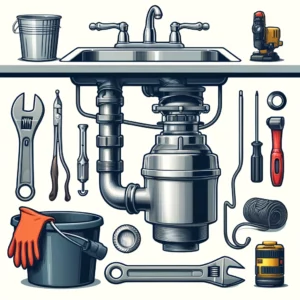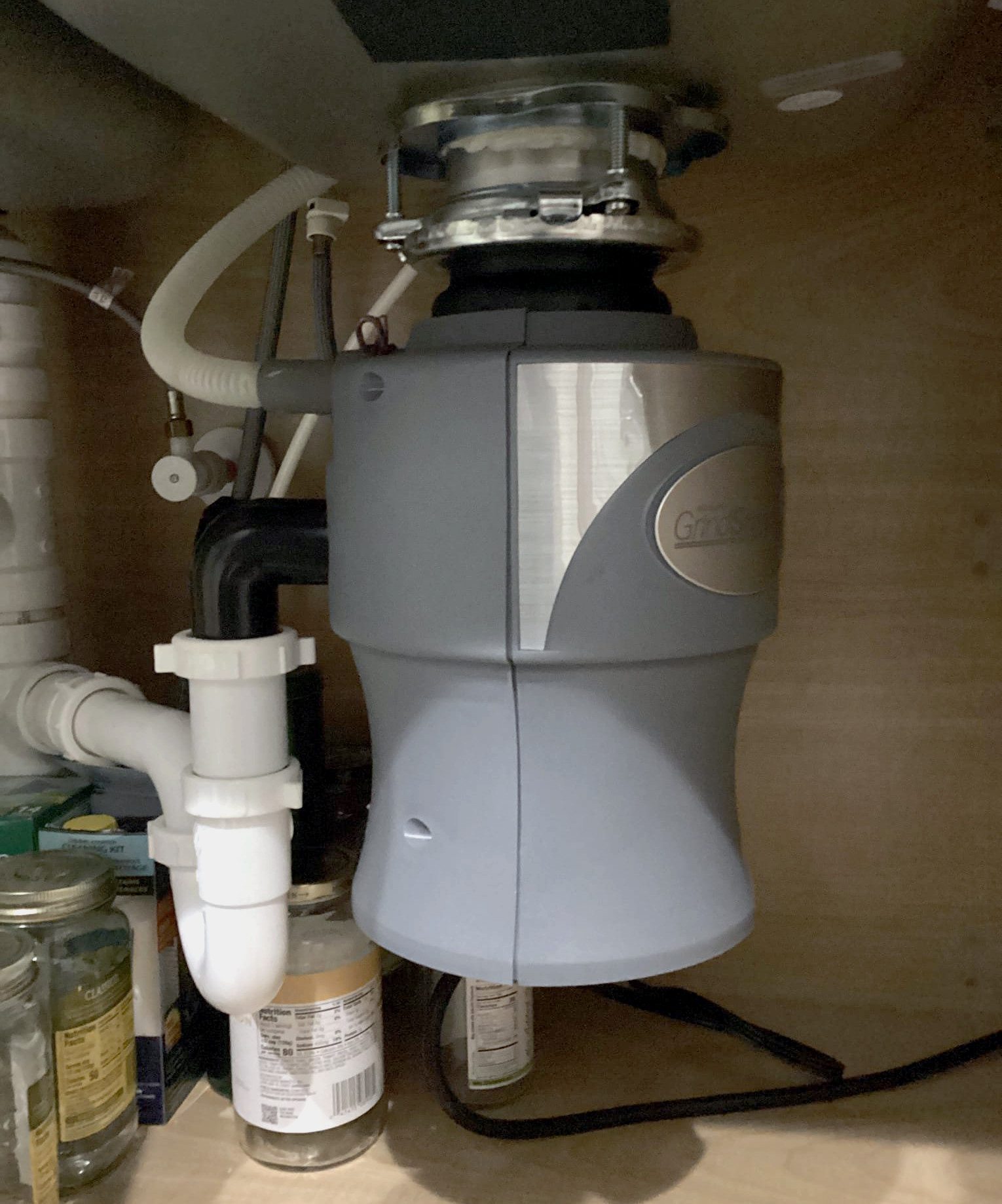A continuous feed garbage disposal makes kitchen cleanup quick and easy, but it can be frustrating when it malfunctions. Regular maintenance and prompt repairs are crucial to keep it running smoothly. Common issues like jams, leaks, and power problems can disrupt your routine. This guide offers practical solutions to these plumbing problems, ensuring your disposal stays efficient and reliable.
Safety First: Preparing for the Repair
 Safety is paramount when dealing with a garbage disposal. Before starting any repair, ensure the unit is disconnected from the power source to avoid accidents. Keep a flashlight handy to see clearly inside the disposal.
Safety is paramount when dealing with a garbage disposal. Before starting any repair, ensure the unit is disconnected from the power source to avoid accidents. Keep a flashlight handy to see clearly inside the disposal.
Tools and materials needed:
- Hex wrench
- Pliers
- Bucket
- Flashlight
- Screwdriver
- Rubber gloves
Wearing rubber gloves will protect your hands, and using a bucket can catch any water or debris that might spill out. Proper preparation sets the stage for a smooth and safe repair process.
Diagnosing Common Issues
Identifying the problem is the first step in fixing your garbage disposal. Common issues include jamming, humming noises, and leaks. Each symptom points to a different underlying problem.
Jamming: When food scraps or foreign objects get stuck, the disposal jams. You might hear a humming noise, but the blades won’t turn.
Humming Noise: A continuous humming sound often indicates a stuck flywheel. The motor runs, but the blades don’t spin.
Leaks: Water leaking from the disposal can come from various points, such as the sink flange, hose connections, or the unit itself. Check these areas to pinpoint the source.
By diagnosing the issue accurately, you can apply the right fix and get your disposal back in working order.
Step-by-Step Guide to Fix a Jammed Disposal
A jammed garbage disposal can disrupt your kitchen routine. Here’s a quick and effective way to fix it.
- Turn Off the Power: Ensure the disposal is off and unplugged. For added safety, turn off the circuit breaker.
- Inspect the Disposal: Use a flashlight to look inside the disposal. Remove any visible food scraps or foreign objects with pliers.
- Manual Rotation: Insert a hex wrench into the hex hole at the bottom of the disposal. Turn it back and forth to manually rotate the blades and clear the jam.
- Reset the Unit: Once the jam is cleared, press the reset button located on the bottom of the disposal.
- Restore Power: Plug the disposal back in and turn the circuit breaker back on. Test the unit by running water and turning it on.
Following these steps ensures a quick fix, getting your disposal back in action.
Addressing Leaks in Your Garbage Disposal
Leaks can occur at various points in your garbage disposal system. Begin by identifying the source. If the leak is coming from the top, it’s likely the sink flange. Tighten the mounting bolts or apply plumber’s putty to seal it. If the leak is at the hose connections, inspect the rubber gasket and replace it if worn out. A crack in the disposal unit itself is more serious; you may need to replace the entire unit. Carefully check all connections and seals to ensure everything is tight and secure.
Resolving Humming or Noisy Garbage Disposal
A humming noise usually means the motor is running, but the blades are stuck. First, cut the power to the disposal. Use a hex wrench to manually turn the blades from underneath, freeing any obstructions. If the noise persists, inspect for foreign objects stuck in the blades. Remove them carefully with pliers. Additionally, check for loose mounting screws or misaligned parts that could cause vibrations. Tighten any loose components to reduce noise. Regularly cleaning the unit can also prevent these issues and ensure smooth operation.
Restoring Power to a Non-Functioning Disposal
When your garbage disposal won’t turn on, it could be an electrical issue. Here’s how to restore power effectively.
First, check the plug. Ensure the disposal is properly plugged into the outlet. If it is, look for the reset button on the bottom of the unit and press it. This can often resolve minor electrical issues.
If the disposal still doesn’t work, inspect the circuit breaker. Sometimes, the circuit can trip, cutting off power to the unit. Reset the breaker if necessary.
Steps to Restore Power:
- Ensure the disposal is plugged in securely.
- Press the reset button on the bottom of the disposal.
- Check the circuit breaker and reset it if tripped.
- Test the wall outlet by plugging in another appliance to see if it works.
- Inspect the power cord for any visible damage.
Following these steps will help you identify and fix electrical issues, ensuring your garbage disposal functions properly again.
Maintaining Your Continuous Feed Garbage Disposal
Regular maintenance is key to keeping your garbage disposal running smoothly. Start by using cold water when operating the disposal, as it helps solidify any grease or oils, making them easier to chop up and flush away. Avoid putting fibrous or starchy foods, such as celery or potato peels, into the disposal, as they can cause clogs.
To keep the blades sharp and the disposal smelling fresh, grind a handful of ice cubes and citrus peels once a month. The ice sharpens and cleans the blades, while the citrus peels provide a natural deodorizer. Additionally, periodically use a disposal cleaner or a mixture of baking soda and vinegar to break down any buildup inside the unit.
Regularly inspect the disposal for leaks or signs of wear. Tighten any loose connections and replace worn-out gaskets as needed. By following these maintenance tips, you can prevent common issues and extend the lifespan of your garbage disposal.
When to Call a Professional
Sometimes, a garbage disposal problem requires professional expertise. If you’ve tried troubleshooting and the issue persists, it’s time to call a plumber. Persistent leaks, frequent jams, or electrical problems that you can’t resolve indicate deeper issues needing professional attention.
Our professional plumbers can diagnose and fix complex problems, ensuring your disposal is safe and efficient. We have the tools and experience to handle repairs or replacements quickly and effectively. Additionally, if your disposal is older and frequently malfunctioning, we can advise whether a replacement is more cost-effective than continual repairs.






